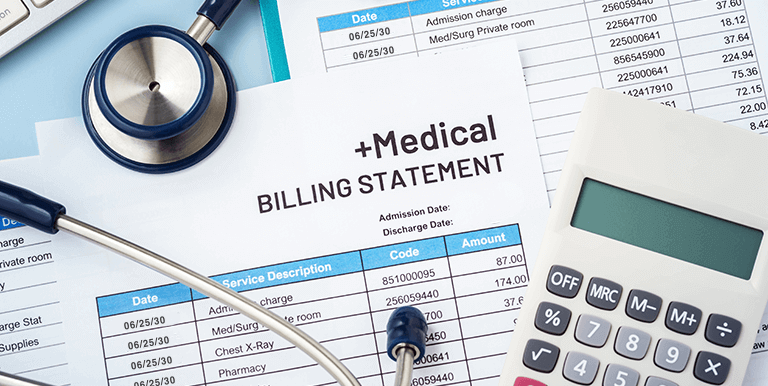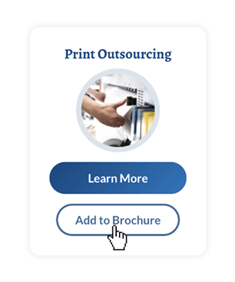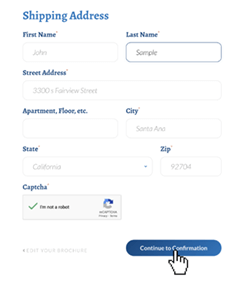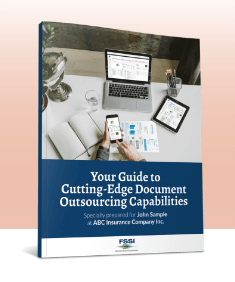Healthcare & HIPAA, Marketing Strategies
Patient Engagement: The Role of Printed Statements in Healthcare Communications

Patient engagement has become more than just a buzzword—it is a cornerstone of quality care. Healthcare providers are increasingly recognize that engaged patients experience better health outcomes, are more satisfied with their care, and actively participate in preventive measures. But how do we foster this engagement in a meaningful and sustainable way? One effective, often underutilized method lies in printed communications.
From personalized care plans to monthly mailers, strategic use of printed materials can build lasting connections with patients, improve treatment adherence, and enhance the overall healthcare experience.
The Impact of Printed Communications on Patient Engagement
While digital platforms have grown in prominence, printed communications still play an essential role in reaching patients. Monthly printed documents, such as healthcare updates or insurance statements, serve as valuable touchpoints, keeping patients informed, connected, and engaged with their care journey. These tangible communications offer more than just routine updates—they act as a bridge, fostering a continuous relationship between patients and their healthcare providers.
For example, a patient receiving a personalized mailing about their progress toward a health goal is not just being informed—they’re being encouraged and empowered to stay on track. Each piece of mail can reinforce a message of partnership, offering actionable insights like preventive care reminders, upcoming appointments, or tips tailored to the patient’s specific needs. These seemingly small but consistent efforts create a rhythm of engagement that is difficult to achieve through digital channels alone.
Personalized Patient Outreach: A Key Driver of Healthcare Engagement
At the heart of effective patient communication lies personalization. Patients are more likely to respond to communications that speak directly to their unique circumstances. For instance, personalized mailers can include relevant health metrics, reminders for overdue screenings, or advice related to chronic conditions.
According to a Salesforce study, over half of consumers expect personalized communications—and healthcare is no exception.
Personalization fosters trust, strengthens the patient-provider relationship, and encourages proactive health behaviors. A patient who receives materials that address their health concerns feels seen and valued, which in turn increases their engagement and participation in their care. In this way, print communications evolve from mere information delivery to meaningful dialogue.
Designing Effective Print Materials for Improved Patient Education and Satisfaction
Design and messaging are critical elements in ensuring that printed materials resonate with patients. Clear, concise language is essential, as is the use of eye-catching visuals that simplify complex medical information. A well-designed mailer can make it easier for patients to understand their health status and follow through on the next steps, such as scheduling a check-up or accessing online resources.
Including actionable prompts within print communications encourage patients to take meaningful steps toward better health. A reminder for an upcoming vaccination or a QR code linking to an online portal reinforces engagement, making it easy for patients to stay involved. Each interaction builds on the last, creating a cohesive narrative of care that keeps patients informed and motivated.
Integrating Print and Digital Strategies for Comprehensive Patient Engagement
While print remains a valuable communication tool, healthcare providers can achieve even greater success by integrating it with digital strategies. A hybrid approach—combining printed materials with email reminders or text alerts—allows providers to meet patients where they are, ensuring they receive timely and relevant information. For instance, a printed appointment reminder might be followed up with a text message closer to the appointment date, reinforcing the importance of the visit.
This balanced communication strategy not only increases patient engagement but also offers greater flexibility. Patients can choose their preferred method of interaction, whether through traditional mail or digital channels, making them feel more in control of their healthcare journey. Importantly, both print and digital communications must adhere to HIPAA guidelines, ensuring patient privacy and data security across all platforms.
Enhancing Engagement Through HIPAA-Compliant Print Communications
The sensitive nature of healthcare communications requires strict adherence to privacy regulations. Partnering with a HIPAA-compliant print and mail vendor ensures that patient information is handled securely, fostering trust and confidence. Providers can feel assured that their communications not only meet legal requirements but also uphold the highest standards of patient privacy.
HIPAA compliance isn’t just about avoiding penalties; it’s a commitment to maintaining the integrity of the patient-provider relationship. When patients trust that their information is safe, they are more likely to engage in communications and participate in their care. This trust becomes the foundation of an effective engagement strategy.
Case Study: HIPAA-Compliant Production of Time-Sensitive Patient Billing Statements
With rising costs and operational challenges to meet deadlines, United WestLabs wanted to focus on their area of expertise – healthcare services – and partner with an expert to outsource print and mail production.
Before engaging FSSI, UWL took on all aspects of production, operating outside of its area of expertise as a healthcare services company. In addition to facing challenges with late, non-compliant mailings due to aging, and unreliable equipment, UWL also experienced high costs to lease, maintain and operate equipment.
FSSI recommended outsourcing most of the statement print and mail operations, with the goal of leveraging the benefits of working with an experienced print and mail outsourcer – including the latest in statement design services, full workflow reporting and substrate expertise.
The result was 100% on-time, HIPAA-compliant mailings, with the time and resources to focus on their core strengths.
Read the full United WestLabs case study here:

The Benefits of Strategic Print Communication for Healthcare Providers and Insurers
Healthcare providers and insurers stand to gain significantly from using print communications strategically. These benefits extend beyond improved patient outcomes:
- Enhanced Engagement: Regular, personalized mailings keep patients informed, motivated, and connected with their care.
- Increased Patient Loyalty: Clear, relevant content fosters trust and encourages long-term relationships.
- Better Resource Utilization: Informed patients are more likely to participate in preventive care, reducing unnecessary hospital visits and improving the use of healthcare resources.
- Competitive Advantage: Integrated communication strategies help providers stand out in a crowded marketplace, positioning them as trusted partners in care.
For insurers, personalized communications also play a crucial role in educating consumers about their coverage options, promoting preventive care programs, and retaining members through positive customer experiences. A health insurance provider, for example, saw a 15% increase in annual check-ups after including reminders in their monthly statements—a clear testament to the power of strategic print communication.

Patient Engagement FAQ and Strategies
Below, we address common questions regarding patient engagement strategies, offering clear insights into how healthcare organizations can effectively involve patients in their care.
How can healthcare organizations improve patient engagement?
Healthcare organizations can enhance patient engagement through personalized printed mailers that provide clear information about health services, appointment reminders, and preventive care tips. Well-designed materials can effectively communicate complex health information and encourage patients to take action.
What are the benefits of patient engagement for healthcare providers?
Patient engagement through printed communications can lead to improved appointment attendance, better adherence to treatment plans, and increased participation in preventive care programs. This approach can result in better health outcomes and potentially reduce healthcare costs.
What are the most effective patient engagement technologies in print?
Effective print technologies include personalized variable data printing, QR codes linking to digital resources, and high-quality graphics that clearly illustrate health information. These features make printed materials more interactive and informative.
How can patient engagement be measured in healthcare print communications?
Patient engagement can be measured through response rates to printed mailers, tracking appointment bookings resulting from mailed reminders, and analyzing the uptake of services promoted in print materials.
What are the barriers to patient engagement in healthcare print communications?
Barriers may include outdated mailing lists, poorly designed materials that fail to capture attention, and lack of personalization in printed communications. Overcoming these challenges requires maintaining accurate patient data and investing in quality design and printing.
How can patient engagement be increased in print communications?
Increasing patient engagement involves using clear language, eye-catching designs, and personalized content in printed materials. Including clear calls to action and making it easy for patients to respond or take the next steps is also crucial.
Printed care plans can include customized health goals, treatment schedules, and self-management tips. They should also provide space for patients to track their progress, encouraging active participation in their care.
What are some examples of successful patient engagement programs using print?
Successful initiatives include personalized health risk assessments mailed to patients, seasonal flu shot reminders, and printed newsletters with health tips and provider updates.
How can patient engagement be sustained over time using print communications?
Sustaining engagement requires consistent, timely, and relevant printed communications such as regular health newsletters and personalized care reminders that complement digital strategies.

Revolutionizing Patient Engagement with Targeted Print Communications
Incorporating print communications into patient engagement strategies offers a unique opportunity to create meaningful, lasting connections. Personalized mailers, designed with care and intention, help patients feel valued and informed, fostering trust and encouraging proactive health behaviors.
By balancing print with digital strategies, maintaining HIPAA compliance, and embracing personalization, healthcare providers can revolutionize how they engage with patients. The result is not just better health outcomes, but also stronger patient-provider relationships and a more efficient healthcare system.
If you’re ready to enhance your patient engagement strategy through print communications, learn more about our HIPAA-compliant print and mail solutions. Contact us today for a free consultation—and take the first step toward building more meaningful connections with your patients.





